Abstract
A rapid method for measurement of assimilable organic carbon (AOC) is proposed. The time needed to perform the assay is reduced by increasing the incubation temperature and increasing the inoculum density. The ATP luciferin-luciferase method quickly enumerates the test organisms without the need for plate count media or dilution bottles. There was no significant difference between AOC values determined with strain P17 for the ATP and plate count procedures. For strain NOX, the plate count procedure underestimated bacterial levels in some samples. Comparison of AOC values obtained by the Belleville laboratory (by the ATP technique) and the Stroud Water Research Center (by plate counts) showed that values were significantly correlated and not significantly different. The study concludes that the rapid AOC method can quickly determine the bacterial growth potential of water within 2 to 4 days.
Full text
PDF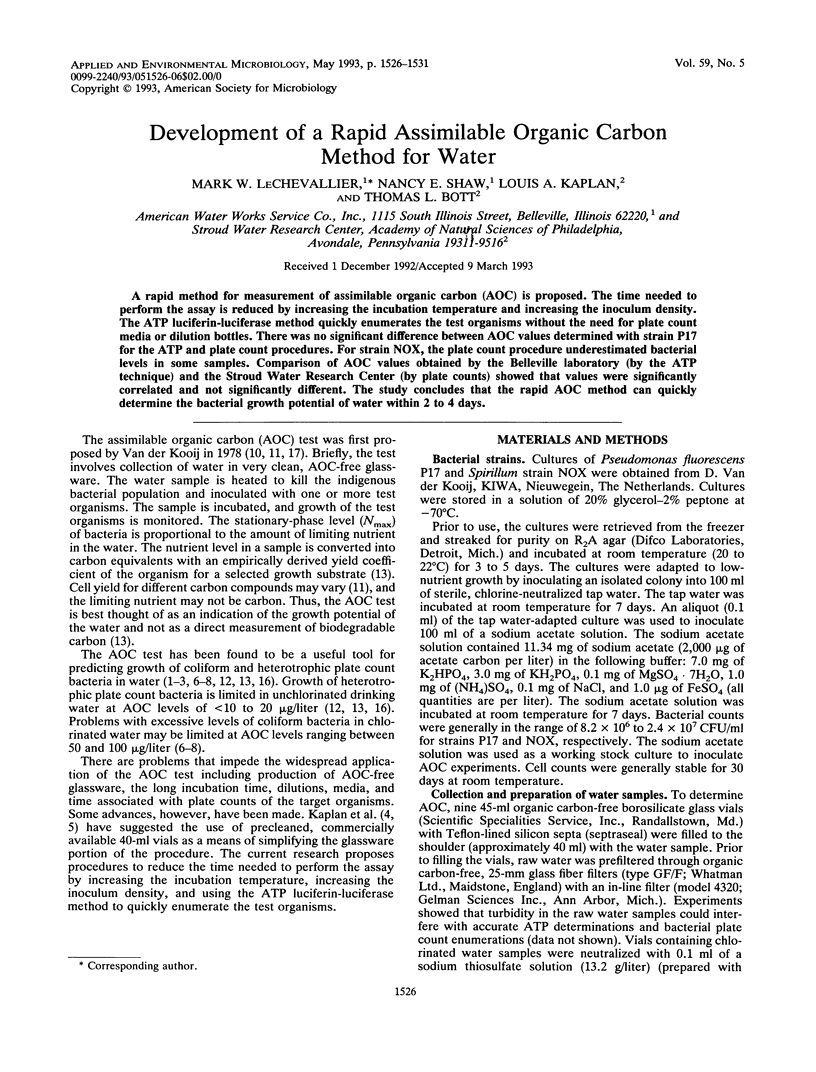
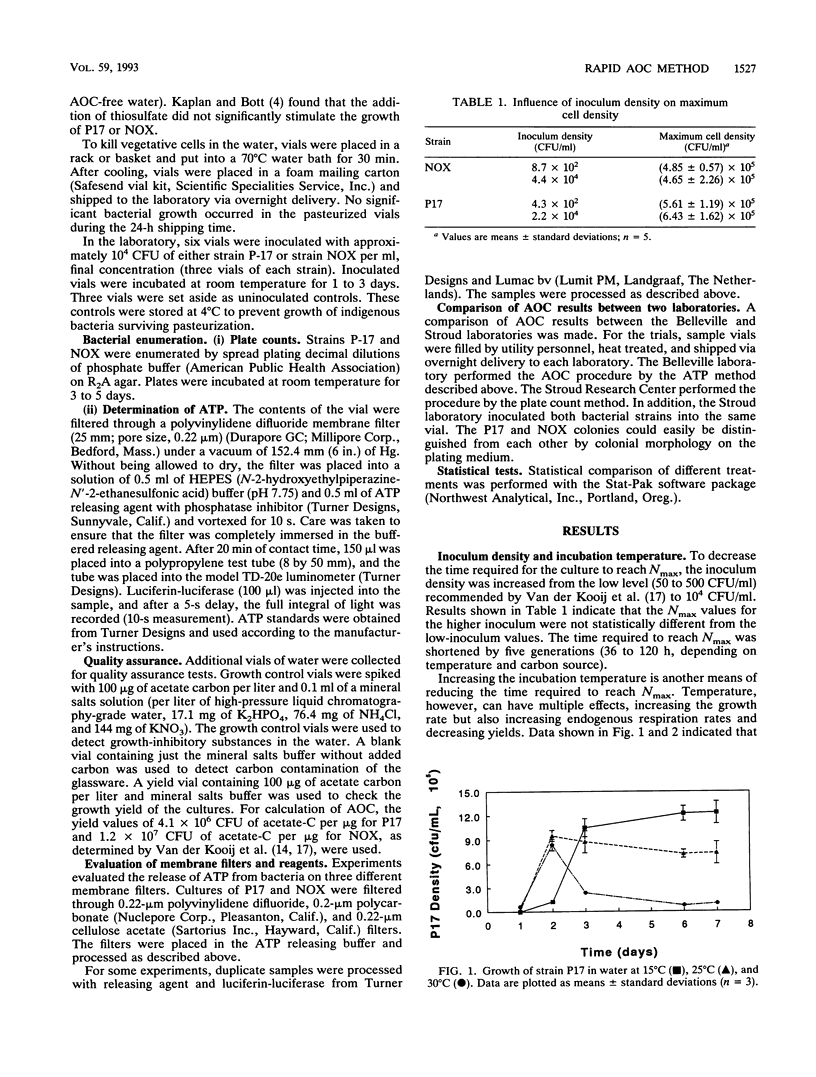
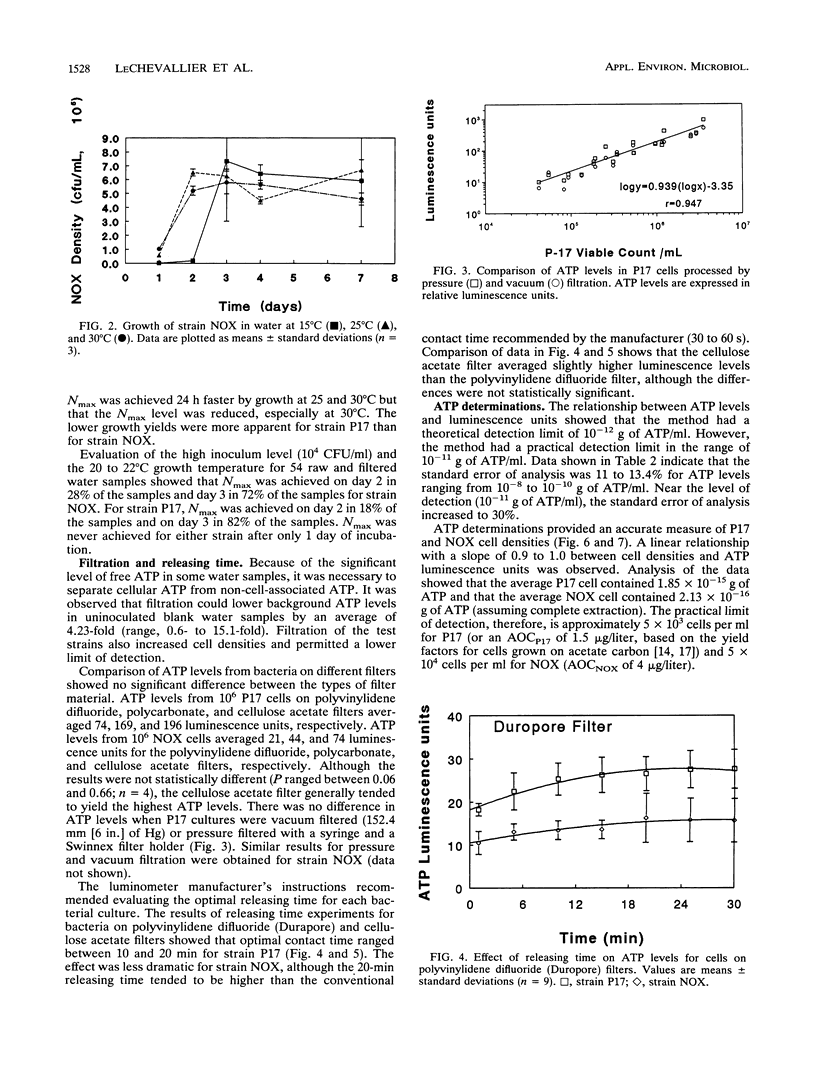
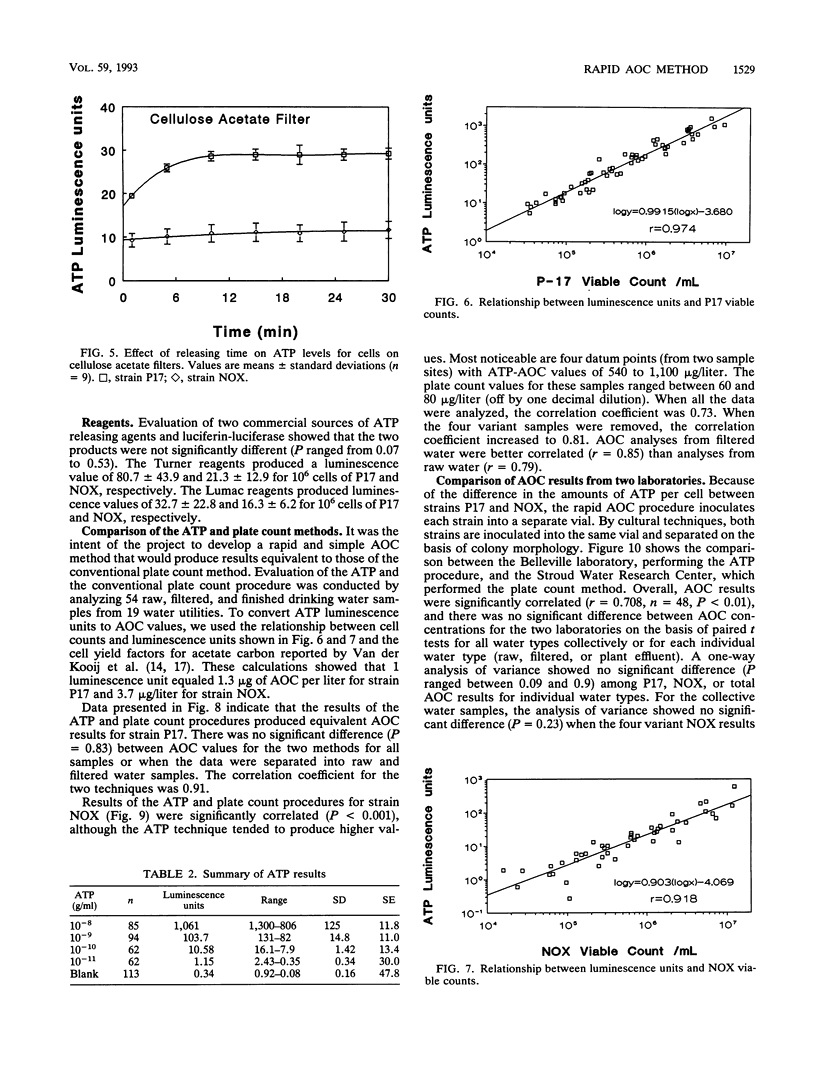
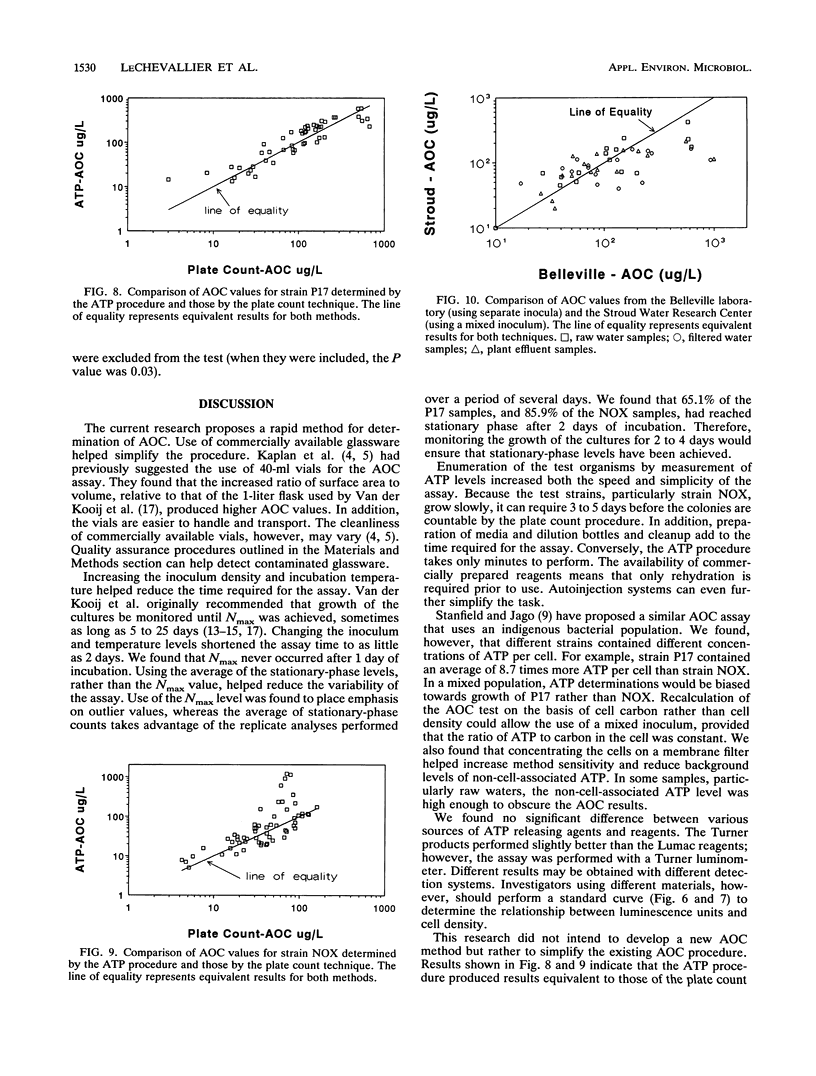
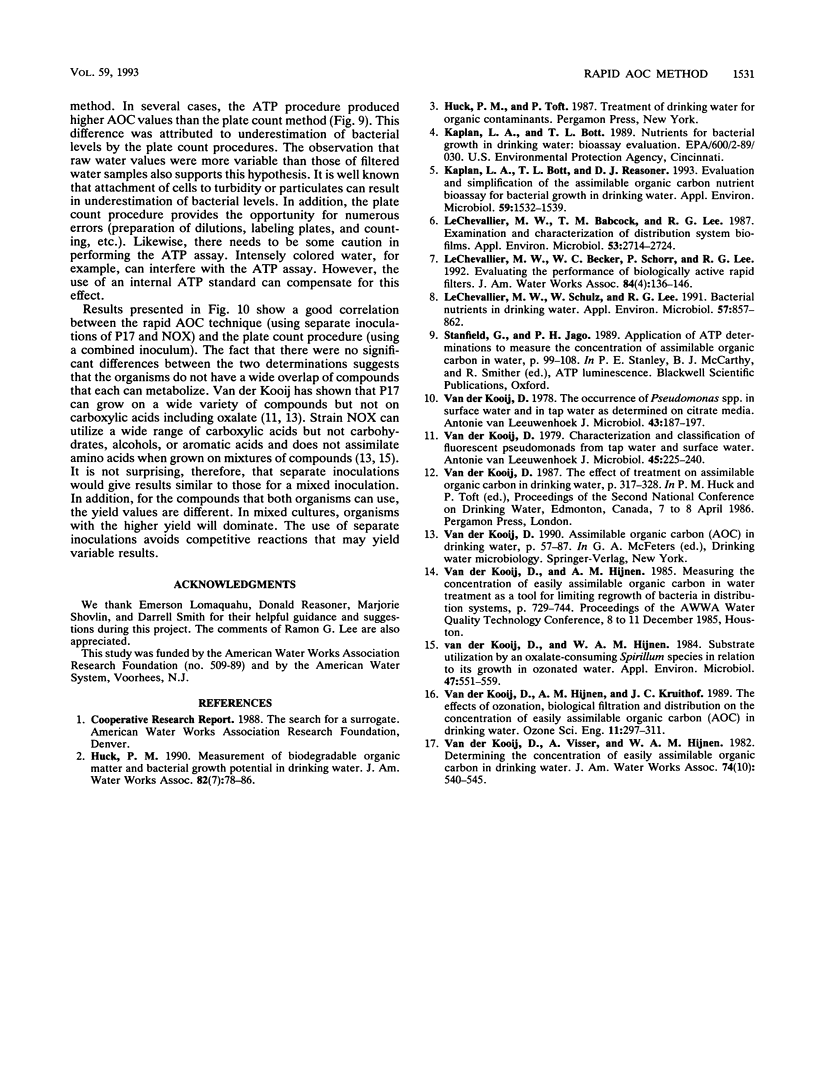
Selected References
These references are in PubMed. This may not be the complete list of references from this article.
- Kaplan L. A., Bott T. L., Reasoner D. J. Evaluation and simplification of the assimilable organic carbon nutrient bioassay for bacterial growth in drinking water. Appl Environ Microbiol. 1993 May;59(5):1532–1539. doi: 10.1128/aem.59.5.1532-1539.1993. [DOI] [PMC free article] [PubMed] [Google Scholar]
- LeChevallier M. W., Babcock T. M., Lee R. G. Examination and characterization of distribution system biofilms. Appl Environ Microbiol. 1987 Dec;53(12):2714–2724. doi: 10.1128/aem.53.12.2714-2724.1987. [DOI] [PMC free article] [PubMed] [Google Scholar]
- LeChevallier M. W., Schulz W., Lee R. G. Bacterial nutrients in drinking water. Appl Environ Microbiol. 1991 Mar;57(3):857–862. doi: 10.1128/aem.57.3.857-862.1991. [DOI] [PMC free article] [PubMed] [Google Scholar]
- van der Kooij D. Characterization and classification of fluorescent pseudomonads isolated from tap water and surface water. Antonie Van Leeuwenhoek. 1979;45(2):225–240. doi: 10.1007/BF00418586. [DOI] [PubMed] [Google Scholar]
- van der Kooij D., Hijnen W. A. Substrate utilization by an oxalate-consuming spirillum species in relation to its growth in ozonated water. Appl Environ Microbiol. 1984 Mar;47(3):551–559. doi: 10.1128/aem.47.3.551-559.1984. [DOI] [PMC free article] [PubMed] [Google Scholar]
- van der Kooij D. The occurrence of Pseudomonas spp. in surface water and in tap water as determined on citrate media. Antonie Van Leeuwenhoek. 1977;43(2):187–197. doi: 10.1007/BF00395673. [DOI] [PubMed] [Google Scholar]


